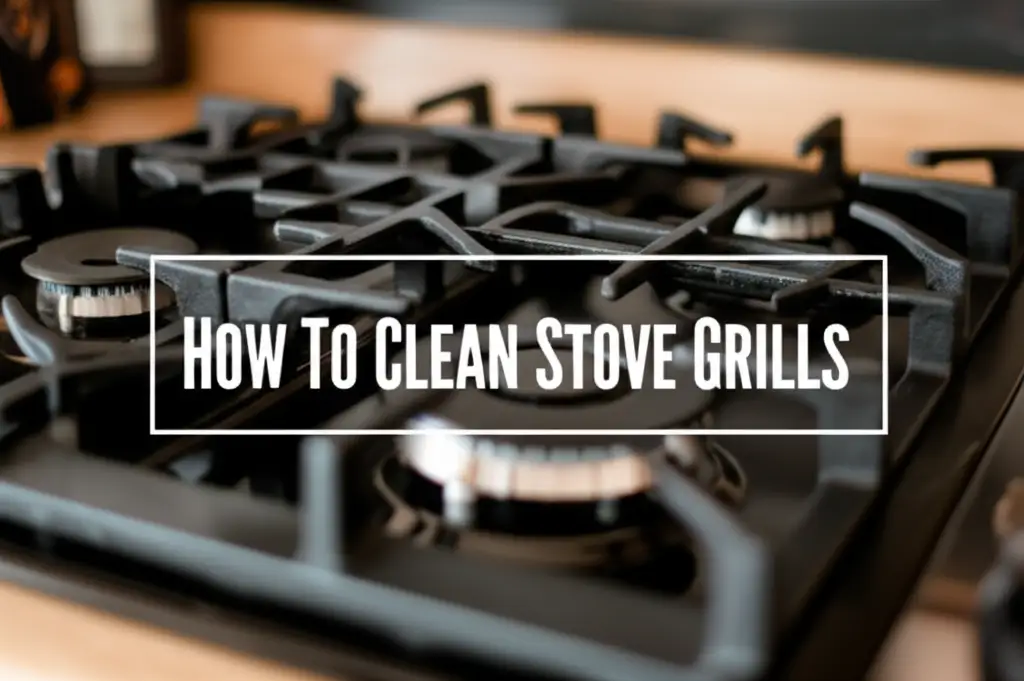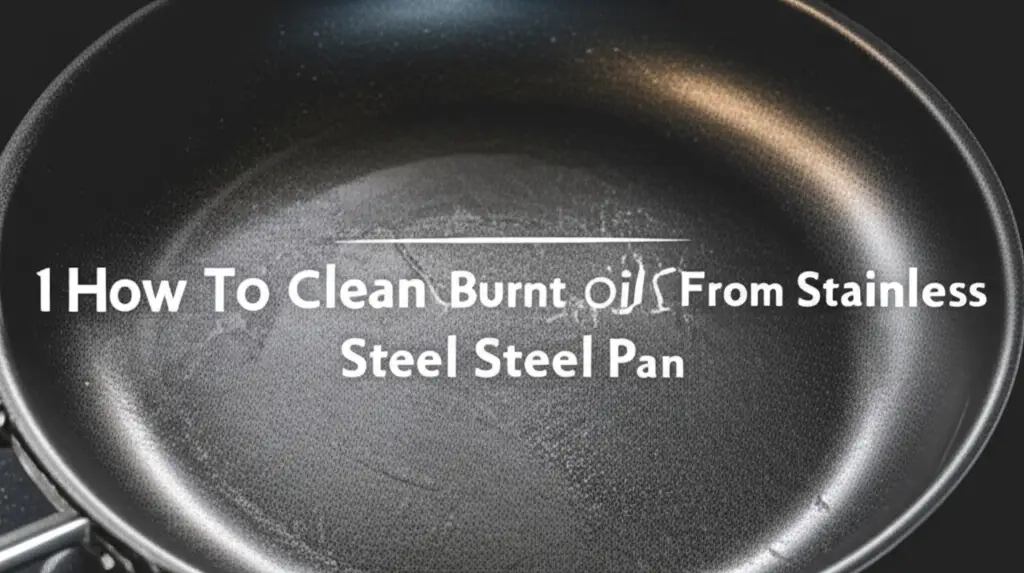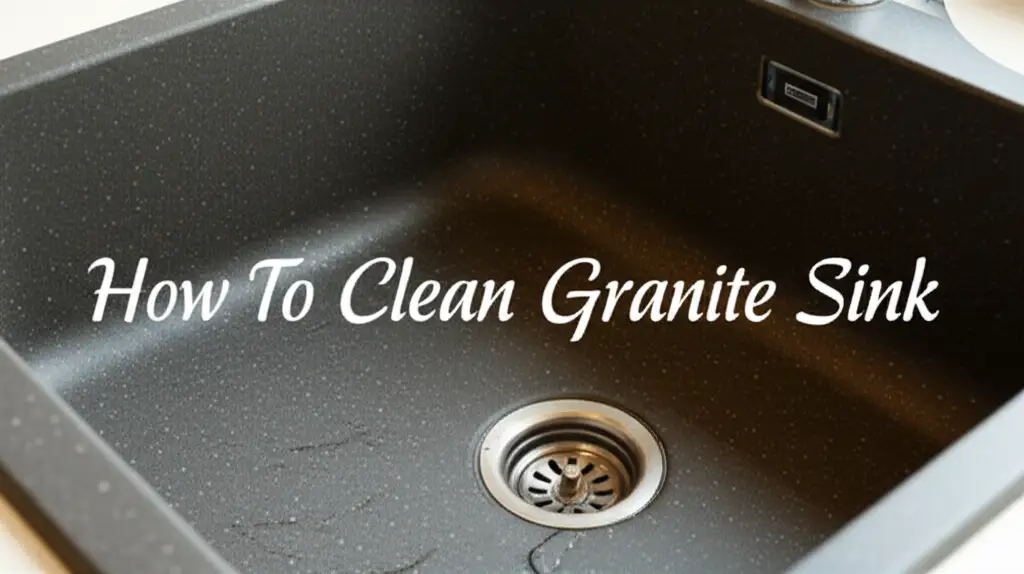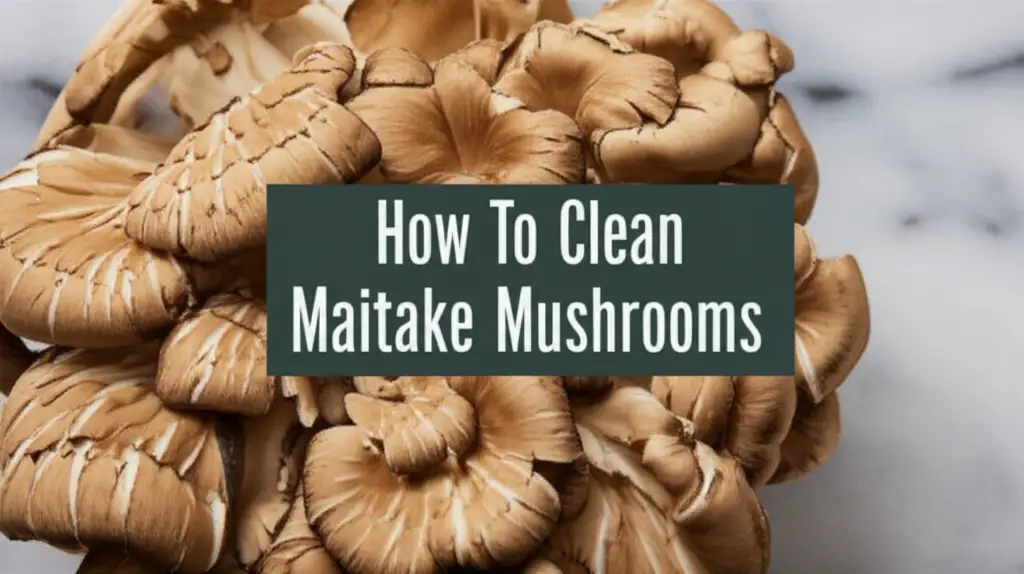· Kitchen Cleaning · 17 min read
How To Clean Blackstone Griddle With Pumice Stone
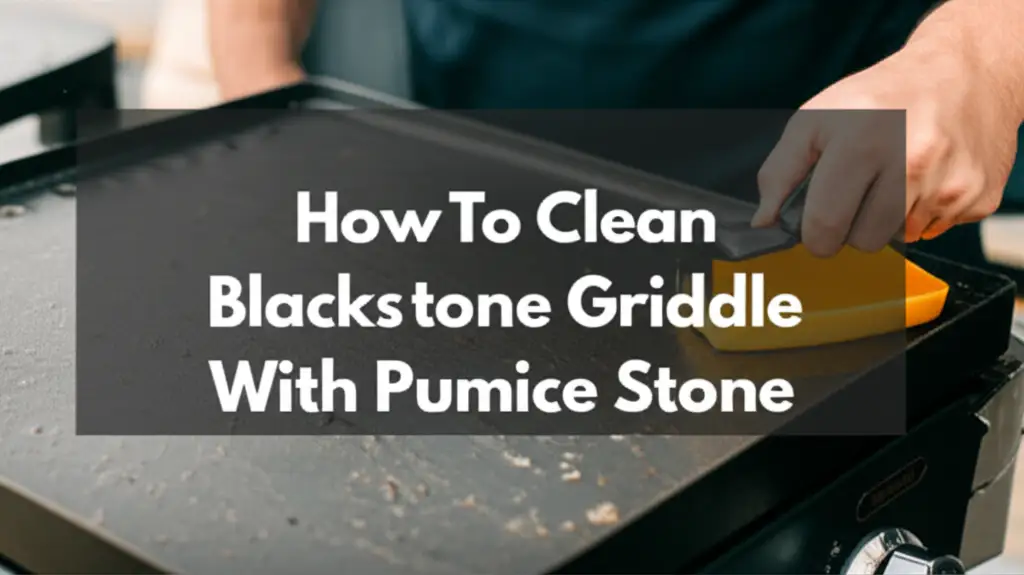
Transform Your Griddle: How To Clean Blackstone Griddle With Pumice Stone
Is your Blackstone griddle showing signs of heavy use? You might see sticky residue, charred food bits, or even patches of rust. These are common issues for outdoor cooking surfaces. A dirty griddle reduces cooking performance. It can also affect the taste of your food. Many people wonder about the best way to restore their griddle to its former glory.
Cleaning a griddle can seem like a big job. Stubborn grease and burned-on food cling tightly to the metal. Traditional cleaning methods sometimes struggle with these tough messes. This article explores a powerful, simple solution: using a pumice stone. We will cover why a pumice stone is effective. We will list the tools you need. You will get a step-by-step guide for cleaning. We will also discuss vital post-cleaning care, including re-seasoning. This guide helps you achieve a sparkling, ready-to-cook griddle. You will learn to maintain it for many delicious meals.
Takeaway
- A pumice stone removes stubborn grime and rust from your Blackstone griddle.
- Always use the pumice stone on a cool, wet griddle surface.
- Scrape off loosened debris and properly re-season the griddle after cleaning.
How do you clean a Blackstone griddle with a pumice stone? Cleaning a Blackstone griddle with a pumice stone effectively removes stubborn food debris and rust. You simply wet the griddle surface, gently scrub with the pumice stone, and then scrape away loosened material. This method revitalizes the cooking surface, preparing it for proper re-seasoning.
Why a Pumice Stone Works Wonders on Your Blackstone Griddle
A pumice stone might seem like an unusual cleaning tool for a griddle. It is actually a highly effective choice. Pumice is a lightweight, porous volcanic rock. It has a mildly abrasive texture. This texture makes it perfect for tackling tough grime. It scrapes away burnt-on food and rust without harsh chemicals.
The abrasive nature of pumice allows it to scrub away layers of carbonized grease. It removes food particles that stick firmly to the griddle surface. The stone is softer than the griddle’s steel. This means it will not scratch the griddle if you use it correctly. This is a key advantage over more aggressive abrasive pads or metal brushes. Those can damage the griddle’s delicate seasoning. They can also create microscopic scratches where rust can form.
Pumice stones wear down as you use them. They create a fine powder that helps with the cleaning action. This powder acts as a mild abrasive itself. It also helps to absorb some of the grease and grime. This makes cleanup easier. You can achieve a smooth, clean surface ready for re-seasoning. This method is also environmentally friendly. It avoids the need for strong chemical cleaners. Strong chemicals can be harmful to you and the environment. They can also leave residues on your cooking surface. I have found pumice stones to be a game-changer for my own griddle. They handle messes that regular scrapers just cannot touch. They leave my griddle looking brand new every time. It is a simple tool with powerful results.
This cleaning method is especially useful for removing thick, baked-on grease. Many people struggle with these types of residues on their cooking surfaces. The porous nature of the stone helps to lift and trap these difficult deposits. It breaks them down mechanically. This allows for their easy removal. For similar challenges with other kitchen items, you can learn how to clean baked-on grease from pans. Understanding these methods helps in keeping all your cooking equipment in top shape. The pumice stone offers a direct, physical cleaning action. It does not rely on harsh solvents. This protects the integrity of your griddle’s surface.
Essential Supplies for Blackstone Griddle Pumice Cleaning
Before you begin cleaning your Blackstone griddle with a pumice stone, gather all necessary supplies. Having everything ready saves time. It also makes the cleaning process smoother and safer. These items are generally easy to find. You might already own many of them. Proper preparation ensures you get the best results.
Here is a list of what you will need:
- Pumice Stone Griddle Cleaner: Ensure you get one specifically designed for griddles. These are often denser and shaped for easier grip. Avoid using a personal care pumice stone. They are too soft.
- Griddle Scraper: A sturdy metal scraper is essential. You will use it to remove the initial loose debris. It also helps to push away the loosened grime after pumice stone use.
- Heat-Resistant Gloves: Protect your hands from heat and grime. Even a cool griddle can have sharp edges. The cleaning process can be messy. Gloves keep your hands clean and safe.
- Bucket of Warm Water: You will need water to wet the griddle surface. Water acts as a lubricant for the pumice stone. It also helps to rinse away debris.
- Paper Towels or Clean Rags: Plenty of these are needed for wiping away grime. You will also use them for drying and applying oil.
- Cooking Oil (High Smoke Point): After cleaning, you must re-season your griddle. Oils like flaxseed, grapeseed, or avocado oil work well. They create a durable, non-stick surface.
- Spatula: Useful for scraping off the initial large pieces of food.
Having these tools at hand makes the deep cleaning process efficient. I always lay out all my supplies before I even turn off the griddle. This way, I can move quickly from one step to the next. The right tools really make a difference for this job. They ensure a thorough clean without frustration. Make sure your workspace is also well-lit. This helps you see all areas of the griddle surface. It ensures no spot is missed during cleaning.
Step-by-Step Guide to Cleaning Your Blackstone Griddle with a Pumice Stone
Cleaning your Blackstone griddle with a pumice stone is a direct process. Following these steps ensures safety and effectiveness. This method removes the toughest build-up. It prepares your griddle for future cooking sessions. Take your time with each step for the best outcome. I have used this exact method many times. It always delivers impressive results.
Here is the detailed process:
Cool Down the Griddle:
- Turn off your griddle completely.
- Let it cool down to a warm temperature. It should be warm enough to loosen grease but cool enough to touch safely. This usually takes 15-30 minutes. Never use a pumice stone on a hot griddle. It can shatter the stone or damage the griddle surface.
- Safety is important here. A very hot griddle can cause burns.
Scrape Off Loose Debris:
- Use your griddle scraper.
- Push off any large food particles, grease, or carbonized bits into the grease trap.
- This initial scrape removes the easy stuff. It allows the pumice stone to focus on the stubborn areas. I always do this first. It makes the pumice stone work more efficiently.
Wet the Griddle Surface:
- Pour a small amount of warm water directly onto the griddle.
- Just enough to create a thin film. This water acts as a lubricant for the pumice stone. It also helps to lift the grime.
- Do not flood the griddle. A little water goes a long way.
Begin Scrubbing with the Pumice Stone:
- Put on your heat-resistant gloves.
- Take the pumice stone.
- Gently rub it over the griddle surface. Use circular motions or straight back-and-forth strokes.
- Apply moderate, even pressure. Let the stone do the work. The stone will break down and create a paste. This paste is a mixture of water, grime, and stone particles. This is normal.
- Focus on areas with heavy build-up or rust. For very tough spots, you might need more water or slightly more pressure. This approach helps remove even stubborn residues. For challenges like these, a similar strategy applies to other surfaces, such as learning how to clean burnt water off glass stove top. The principle of gentle abrasion on tough spots remains consistent.
Scrape and Rinse:
- After scrubbing a section, use your griddle scraper again.
- Push the paste and loosened debris into the grease trap.
- Add a bit more water.
- Wipe the area clean with paper towels or a rag. Repeat this process across the entire griddle surface until it looks clean.
- You might need several rounds of scrubbing, scraping, and wiping for a very dirty griddle.
Final Rinse and Dry:
- Once the griddle looks clean, pour some fresh water over the entire surface.
- Use the scraper to push all water and remaining residue into the grease trap.
- Thoroughly wipe the griddle dry with clean paper towels or rags. Ensure no moisture remains. Moisture can lead to rust.
Inspect and Re-Season Immediately:
- Check the griddle surface. It should be free of food bits and rust. It might look dull or stripped. This is expected.
- Immediately move to the re-seasoning step. This protects the bare metal. It also creates a new non-stick surface.
This step-by-step method ensures a comprehensive clean. It helps you restore your Blackstone griddle to its optimal condition. Proper technique and immediate re-seasoning are key to long-term griddle health. I always feel a sense of accomplishment when my griddle is clean. It is ready for the next cookout.
Post-Cleaning Care and Griddle Re-Seasoning
Cleaning your Blackstone griddle with a pumice stone removes all the old, built-up seasoning. This leaves the metal surface bare and unprotected. Re-seasoning your griddle immediately after cleaning is critical. This step prevents rust. It also restores the griddle’s non-stick properties. A well-seasoned griddle cooks food better. It also makes future cleaning much easier. This process is simple but essential for griddle longevity.
Here is how to properly re-season your griddle:
Heat the Griddle:
- Turn on your Blackstone griddle to a low-medium heat setting.
- Let the griddle warm up for about 5-10 minutes. This opens the pores of the metal. It helps the oil bond effectively. The surface should be warm to the touch.
Apply a Thin Layer of Oil:
- Use a high-smoke-point cooking oil. Good choices include flaxseed, grapeseed, avocado, or Blackstone’s own griddle seasoning blend. Avoid olive oil. Its smoke point is too low.
- Pour about 1-2 tablespoons of oil onto the griddle surface.
- Use a paper towel or a clean rag held with tongs. Carefully spread a very thin, even layer of oil over the entire cooking surface. Make sure to cover the edges too.
- The key is “thin.” Too much oil will result in a sticky, gummy surface. It will not season properly. My rule of thumb is to apply oil and then try to wipe it all off. What remains is usually the perfect amount.
Allow the Oil to Smoke Off:
- Keep the griddle on low-medium heat.
- The oil will start to smoke. This means it is polymerizing. This process bonds the oil to the metal. It creates a durable, non-stick layer.
- Let the oil smoke until it stops. This usually takes 10-15 minutes. The griddle surface will darken.
Repeat the Process:
- Once the smoke stops, turn off the griddle heat.
- Let the griddle cool for 5-10 minutes.
- Repeat steps 2 and 3 at least 3-4 more times. For a truly robust seasoning, 5-7 layers are ideal. Each layer adds to the non-stick quality and protection. I always do at least five layers after a deep clean. This gives me confidence in the surface.
- The griddle will get progressively darker and smoother with each layer.
Cool and Store:
- After the final seasoning layer, turn off the griddle.
- Let it cool completely.
- Once cool, you can lightly wipe it with a very thin layer of oil for extra protection.
- Store your griddle in a dry place. Cover it to protect it from moisture and debris.
Proper seasoning is the backbone of a great griddle. It protects the metal. It makes cooking and cleaning a breeze. Taking the time to do it right after a deep clean pays off greatly. For more general cleaning with household items, you might find tips on how to clean with vinegar and baking soda useful for various kitchen tasks. A well-maintained griddle provides years of enjoyment.
Common Mistakes to Avoid When Using a Pumice Stone
Using a pumice stone on your Blackstone griddle is effective. However, certain mistakes can damage your griddle or make the cleaning process harder. Avoiding these common pitfalls ensures a safe and successful clean. I have learned these lessons from experience. Sharing them helps you get it right the first time.
Here are the mistakes to watch out for:
- Using on a Hot Griddle: This is perhaps the biggest mistake. A hot griddle can cause the pumice stone to shatter or crumble excessively. It can also create steam burns. Always ensure the griddle is cool enough to touch before you begin scrubbing. Warm is okay, but never hot.
- Dry Scrubbing: Never use a pumice stone on a dry griddle surface. The water acts as a lubricant. It helps the stone glide smoothly. Without water, the stone can scratch the surface more easily. It also creates a lot of dust. Always keep the griddle surface moist during scrubbing.
- Excessive Pressure: A pumice stone works with gentle to moderate pressure. You do not need to press down with all your might. Too much force can lead to uneven wear on the stone. It can also potentially create deeper marks on the griddle surface. Let the abrasive nature of the stone do its job.
- Not Re-Seasoning Immediately: As discussed, the pumice stone strips away the protective seasoning. If you do not re-season right away, your griddle will be vulnerable to rust. Always follow a pumice stone clean with a thorough re-seasoning process. This step is non-negotiable for griddle health.
- Ignoring Safety Gear: Skipping gloves can lead to cuts or chemical burns. Even if you avoid harsh chemicals, the griddle surface can have sharp edges. The pumice stone itself creates fine particles. Gloves protect your hands. I always wear good heat-resistant gloves.
- Using the Wrong Type of Pumice Stone: Some pumice stones are for personal care. They are too soft. Always use a pumice stone specifically designed for griddle or grill cleaning. These are harder and more durable. They are made for tough kitchen messes.
- Not Cleaning the Entire Surface: Ensure you clean the entire griddle surface, not just the heavily soiled areas. Even seemingly clean spots might have thin layers of old seasoning. A uniform clean ensures a consistent surface for re-seasoning. This leads to better cooking.
- Leaving Residue Behind: After scrubbing, make sure to scrape and wipe away all pumice stone residue and grime. If left, these particles can get cooked into your next meal. They can also prevent proper seasoning. Rinse and wipe until the water runs clear.
Avoiding these common errors makes your griddle cleaning process effective. It also keeps your griddle in excellent condition. Proper technique extends the life of your Blackstone griddle significantly.
When to Deep Clean Your Blackstone Griddle
Understanding when your Blackstone griddle needs a deep clean with a pumice stone is important. Not every mess requires such an intensive process. Regular maintenance keeps your griddle healthy. Deep cleaning addresses specific problems. Knowing the signs helps you decide the right time for this powerful cleaning method.
Here are the indicators that your griddle is due for a deep clean:
- Stubborn, Baked-On Food and Grease: This is the most common reason. If regular scraping and wiping cannot remove charred food bits or thick layers of grease, a pumice stone is your next step. These residues cause uneven cooking. They can also transfer unwanted flavors to your food.
- Rust Formation: Even with good care, rust can appear on a griddle. This happens from prolonged exposure to moisture or high humidity. Small rust spots can turn into larger problems. A pumice stone is effective at scrubbing away surface rust. It reveals the clean metal underneath.
- Sticky or Gummy Surface: A griddle surface that feels sticky or gummy after cooking and cleaning indicates old, polymerized oil that has gone rancid or was not properly seasoned. This sticky layer needs removal. It interferes with cooking. The pumice stone strips this layer away.
- Uneven Cooking Performance: If your food cooks unevenly, with hot spots and cold spots, it might be due to an inconsistent griddle surface. Heavy build-up or patchy seasoning can cause this. A deep clean restores a uniform cooking surface. This allows for even heat distribution.
- Loss of Non-Stick Properties: A well-seasoned griddle is naturally non-stick. If food consistently sticks, even after light oiling, your seasoning might be compromised. A deep clean removes the faulty seasoning. This prepares the surface for a fresh, effective layer.
- Infrequent Use or Long-Term Storage: If your griddle has sat unused for a long time, especially outdoors, it likely needs a deep clean. Dust, debris, and potential rust can accumulate. A thorough cleaning ensures it is ready for safe use.
- Before Re-Seasoning from Scratch: Sometimes, you want to strip your griddle completely bare to start a fresh seasoning process. This might be for a new griddle, a griddle you inherited, or one that has been severely neglected. A pumice stone provides that blank slate.
Frequency: You do not need to use a pumice stone after every cook. For most users, a deep clean with a pumice stone might be necessary every few months. It could be once or twice a year. This depends on your usage frequency and how well you perform routine maintenance. Regular light cleaning after each use helps prolong the time between deep cleans. Always address any issues quickly. This prevents small problems from becoming large ones. A deep clean keeps your griddle working at its best for years to come.
Frequently Asked Questions
Is a pumice stone safe for Blackstone griddles?
Yes, a pumice stone is generally safe for Blackstone griddles when used correctly. The stone is softer than the griddle’s steel. This means it will not scratch the surface if you use moderate pressure and keep the griddle wet. It effectively removes stubborn grime without harsh chemicals.
Can I use soap after cleaning with a pumice stone?
It is not recommended to use soap after cleaning your Blackstone griddle with a pumice stone. Soap strips away the natural seasoning. The pumice stone removes the old seasoning anyway. After cleaning, thoroughly rinse with water. Then, proceed immediately to re-season the griddle with oil.
How often should I use a pumice stone on my griddle?
You do not need to use a pumice stone after every cook. Use it when you have stubborn, baked-on food, rust, or a gummy surface that regular scraping cannot remove. For most users, this might be a few times a year. Regular light cleaning after each use is usually sufficient.
What if my griddle rusts after cleaning?
If your griddle rusts after cleaning, it means it was not properly dried or re-seasoned. Rust forms quickly on bare metal exposed to moisture. If rust appears, simply re-clean the rusted spots with the pumice stone. Dry it thoroughly, and then immediately apply several layers of seasoning oil.
Can I use a pumice stone on other types of griddles?
Pumice stones are generally safe for cast iron and carbon steel griddles. These materials are similar to Blackstone griddles. Always test a small, inconspicuous area first. Avoid using pumice stones on non-stick coated surfaces or chrome griddles. It will damage their delicate finishes.
Conclusion
Cleaning your Blackstone griddle with a pumice stone offers a powerful solution for stubborn grime. It tackles baked-on food, old grease, and rust effectively. This method restores your cooking surface without relying on harsh chemicals. I have seen firsthand how well it transforms a neglected griddle. It makes it look and perform almost like new.
Remember, the process involves a few simple yet crucial steps. Always ensure your griddle is cool and wet before you start scrubbing. Use moderate pressure with the pumice stone. Afterwards, scrape away all the loosened debris. The most critical step after cleaning is re-seasoning. This protects the bare metal. It also builds a new non-stick surface. A well-seasoned griddle ensures enjoyable cooking experiences for years. Embrace the power of the pumice stone. Keep your Blackstone griddle in peak condition. Get ready to cook up more delicious meals outdoors. Your griddle is now ready for its next culinary adventure!
- blackstone griddle
- pumice stone cleaning
- griddle maintenance
- outdoor cooking
- deep cleaning

